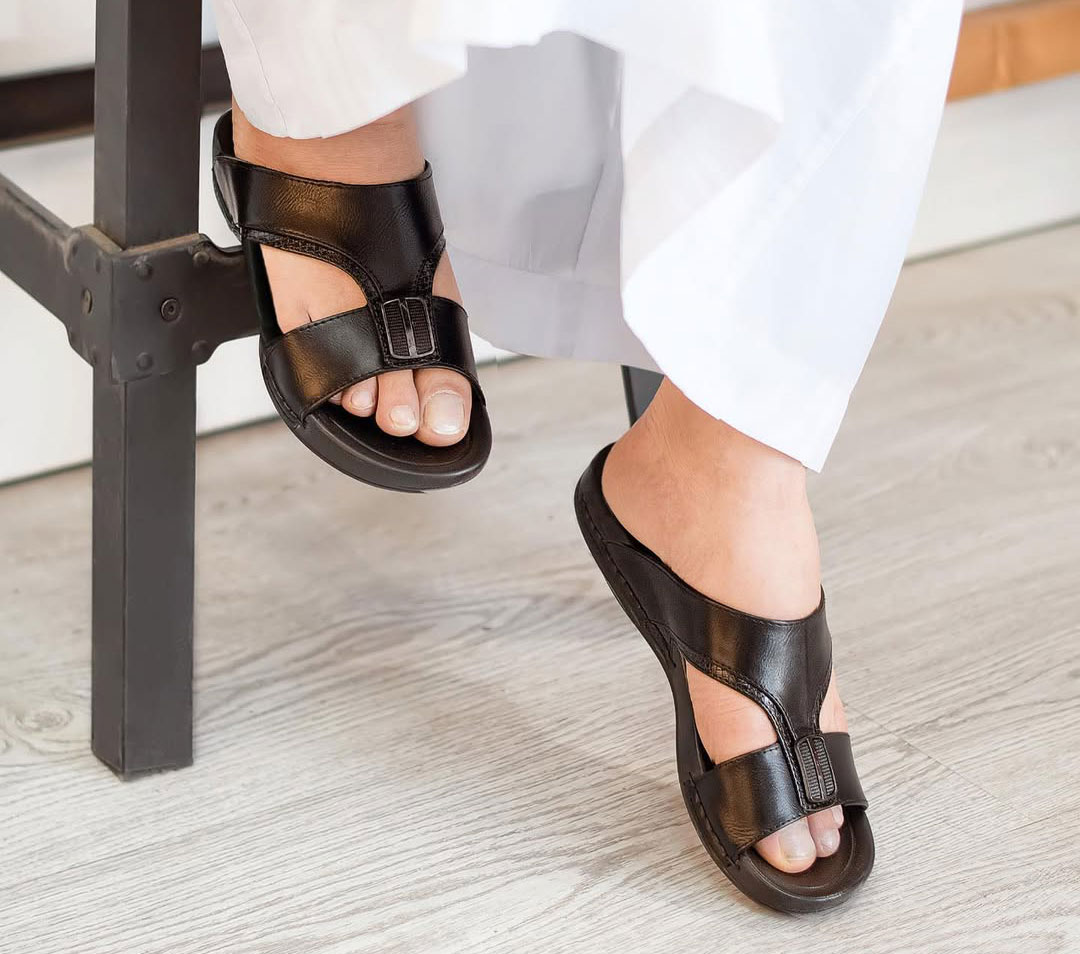Features of Arabic Sandals + Prices and Wholesale
what will you read...
Arabic Sandals: A Symbol of Comfort and CultureHistory of Arabic SandalsPrice of Arabic SandalsDesign Features of Arabic Sandals- Simplicity- Materials- Patterns and ColorsUsageCultural and Social Significance of Arabic SandalsModernization and Contemporary Use
If you want to know the price of Arabic slippers, as well as its features, we recommend this article
Arabic Sandals: A Symbol of Comfort and Culture
Arabic sandals are a cultural and practical achievement of the Middle Eastern and North African peoples. They have long been an essential element of daily life and attire. This article explores their history, design features, cultural significance, modern applications, and even their humorous place in popular culture.

History of Arabic Sandals
Arabic sandals, sometimes referred to as *”Na’al”* or *”Midas”*, originate from the warm and arid climates of Arab countries. The extreme heat and abundance of sand and dust in these regions prompted the design of lightweight and comfortable footwear that could protect feet from the heat and rough surfaces.
Initially crafted from natural leather sourced locally, their simple and functional design gained popularity among various communities, becoming a symbol of everyday life for Arab people.
Price of Arabic Sandals
The price of Arabic sandals ranges from 250,000 to 500,000 Iranian tomans.

Design Features of Arabic Sandals
– Simplicity
The hallmark of Arabic sandals is their simple design. They are often strapless or feature minimal adornments, emphasizing practicality and ease of use.
– Materials
Traditional sandals were primarily made from natural leather, valued for its durability and flexibility. Today, advancements in technology have introduced synthetic leather, rubber, and even plastic as alternative materials for manufacturing these sandals.

– Patterns and Colors
The design is typically minimalist, with colors such as brown, black, and occasionally gold or silver used for decoration. These colors harmonize well with traditional clothing and the cultural preferences of the region.
Usage
Due to their open design and lightweight nature, Arabic sandals are ideal for hot and dry climates. They are easy to put on and remove, making them popular in places like mosques, homes, and even outdoor settings.
Cultural and Social Significance of Arabic Sandals
Arabic sandals go beyond being mere footwear; they represent the cultural and ethnic identity of Arab people. They hold a special place in traditional attire and formal occasions. For instance, hand-stitched and decorated Arabic sandals are used as symbols of respect and beauty in weddings and religious events.
Furthermore, these sandals are deeply ingrained in the popular culture of the region, appearing in stories, proverbs, and even jokes, highlighting their importance in everyday life.

Modernization and Contemporary Use
With the expansion of the fashion and design industry, Arabic sandals have entered a new phase of evolution. Modern designers blend traditional designs with contemporary elements, transforming them into global products. Renowned international brands have also drawn inspiration from these sandals, introducing innovative versions to the market.
Today, Arabic sandals are not only popular in Arab countries but also appreciated worldwide for their comfort and aesthetic appeal. The use of diverse materials, modern embellishments, and creative designs has made them a beloved accessory in modern lifestyles.
Arabic sandals, with their rich history, unique design, and special place in culture and daily life, are recognized not just as practical footwear but as a symbol of the art and heritage of Arab people. As they find their place in the modern world, they continue to serve as a reminder of the traditions and authenticity of Middle Eastern societies.


















